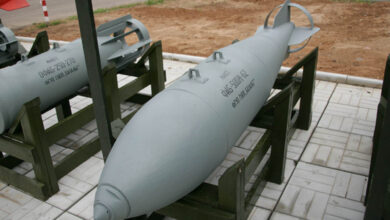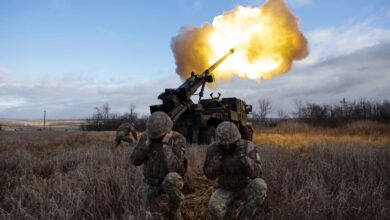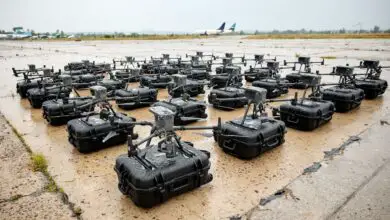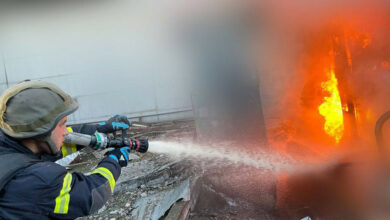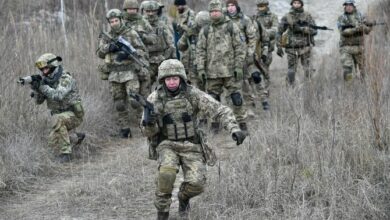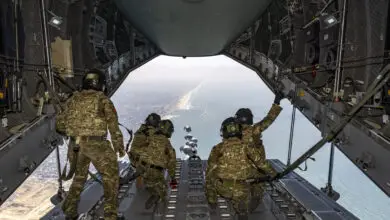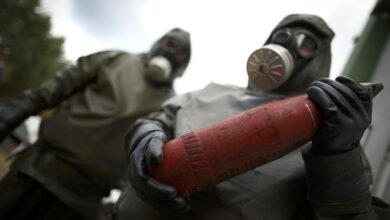After years helping others, aid workers are Syria’s latest refugees
Syrians who worked for international NGOs are fleeing into Iraq, fearing conscription into the Syrian army, or reprisals from the regime or Turkey-backed rebels
International humanitarian organization staff evacuated northeast Syria in the days immediately following Turkey’s incursion a fortnight ago, but no one wanted to leave behind tens of thousands of Syrians languishing in IDP camps throughout the northeast.
Now, Syrians who worked for foreign organizations face the threat of being conscripted into the Syrian army, or reprisals from the regime or Turkey-backed rebels. Every international NGO working on the ground in the former autonomous region has had at least one staff member flee into neighboring Iraqi Kurdistan.
“The situation in northeast Syria is still extremely volatile. It’s a region gripped with fear and uncertainty. We see it in aid workers having to themselves flee with their families to what they consider to be safer areas. We see it in the growing numbers of people who manage to cross into Iraq every day,” said Karl Schembri, Norwegian Refugee Council Regional Media Adviser in the Middle East.
The NGOs already operate precariously in a country where the government doesn’t like to acknowledge refugee camps exist. Camps for internally displaced people are clustered in the northeast in an area that was, until a few days ago, under the control of an autonomous administration that enjoyed the support and funding of the U.S.-led Coalition against Islamic State.
The Defense Post agreed to keep three NGO sources anonymous and the details of their operations general out of concern for the safety of Syrian staff and ability of organizations to operate in northeast Syria.
“MSF pulled out. When that happens that means that shit has really hit the fan, because MSF are usually the last ones to leave a place,” said one source with an international NGO.
Fear of being conscripted into the Syrian army is the main drive for Syrian aid workers to leave their jobs and their homes and seek refuge across the border.
More than 10,000 people entered Iraq from Syria in the 10 days after the SDF agreed to allow regime patrols in the northeast, with 1,700 people crossing on Thursday alone, according to the International Organization for Migration.
For their own security, the organizations aren’t eager to share, even among themselves, how many of their staff have left Syria.
“For protection reasons they can’t really say how many,” said one humanitarian worker with an international aid organization. “They’ll say ‘a few’ or ‘under 10’ or ‘over 20’ but they want to protect their staff.”
“I don’t think an exact number would be possible but 100% of NGOs have at least one staff that have fled across the border as a refugee. Some probably have a lot more than that.”
“A number of them, but I can’t tell you how many, have had to flee with their families because of the fighting, and then as it started sinking in what’s really happening,” said another source.
As the Americans pulled out of northeast Syria, staff from multiple NGOs burned or otherwise destroyed files at the camps in an attempt to erase any signs of cooperation with the United States or Syrian Democratic Forces, multiple sources said.
The camps were never supposed to be permanent in the first place, but Syria’s eight-year-long civil war has seen so many people displaced from so many different aspects of the conflict – the Assad regime, Islamic State, Coalition airstrikes, and abject poverty – that there is nowhere left for them to go. In some places, like the notorious Al-Hol camp, women linked to Islamic State and their children are packed into secure “annexes” where only a limited number of aid workers are allowed, for their own security.
Al-Hol remains in control of the SDF’s internal security forces but “this is going to change at any moment,” a source said.
Northeast Syria has been outside Assad’s reach for most of the war, but an October 13 devil’s bargain the SDF made with the Syrian government and Russia means regime troops will be deployed across the autonomous region and up to the border with Turkey.
“Most men in the SDF held areas did not do military service in the past few years. They had no reason to … so they would need to make a decision to go out of SDF areas to go and serve,” said Elizabeth Tsurkov, a fellow at the Foreign Policy Research Institute. “So naturally the males in NGOs, the ones who are not lone men – the only children for their parents – unless they have really extreme disabilities, they are wanted for service.”
Writing in The New Republic this week, Tsurkov highlighted another concern for humanitarian workers: some NGO employees recently returned to Syria at the urging of the U.S. government to lead local reconstruction projects in areas freed from ISIS that are outside Syrian regime control. Many of those local workers are now wanted by the Syrian government, she wrote.
The renewed conflict forced the closure of two critical camps for displaced people in Ain Issa and Mabrouka. The last of 14 families were evacuated from Mabrouka this week and Ain Issa has been completely emptied of its nearly 13,000 residents, with people either relocating to U.N.-run camps or one of over 50 collective shelters or simply disappearing.
“It’s still a war zone,” Schembri said. The northeast is “riddled with unexploded bombs, with damaged and destroyed civilian infrastructure like hospitals. Schools are serving as collective shelters, and on top of all this there is the huge uncertainty, not only whether the fighting will erupt again – that’s hanging over their heads all the time – also what happens when area changes hands, be it one side or the other, they are extremely afraid of reprisals, of persecution, of what’s going to happen next.”
Aid is still getting to the camps and shelters, but regime checkpoints outside towns and cities and along the M4 highway, which transverses northeast Syria parallel to the border, add a new layer of concern for Syrian aid workers.
One organization has urged local staff not to travel long distances, or to stay home altogether because of the risk of military conscription.
“We’re struggling to keep the basics of what we were running before the military escalation,” said a source with another NGO that has an extensive presence in the region.
Aid organizations are quick to say that they still have dedicated local staff – Syrians willing to risk their lives to care for the people they’ve grown close to over the years.
“I think a lot of them feel really drawn to continue services … these people have relationships with the people in the camps. They’re their friends, especially our protection case workers who work with the small children. They feel like this is their kids. They don’t want to leave,” the humanitarian worker said.
Some Syrian staff are volunteering with other organizations “so that the people they’ve worked with for years and they really care about can continue to have food, water and shelter,” she said. “There’s a tremendous dedication.”


